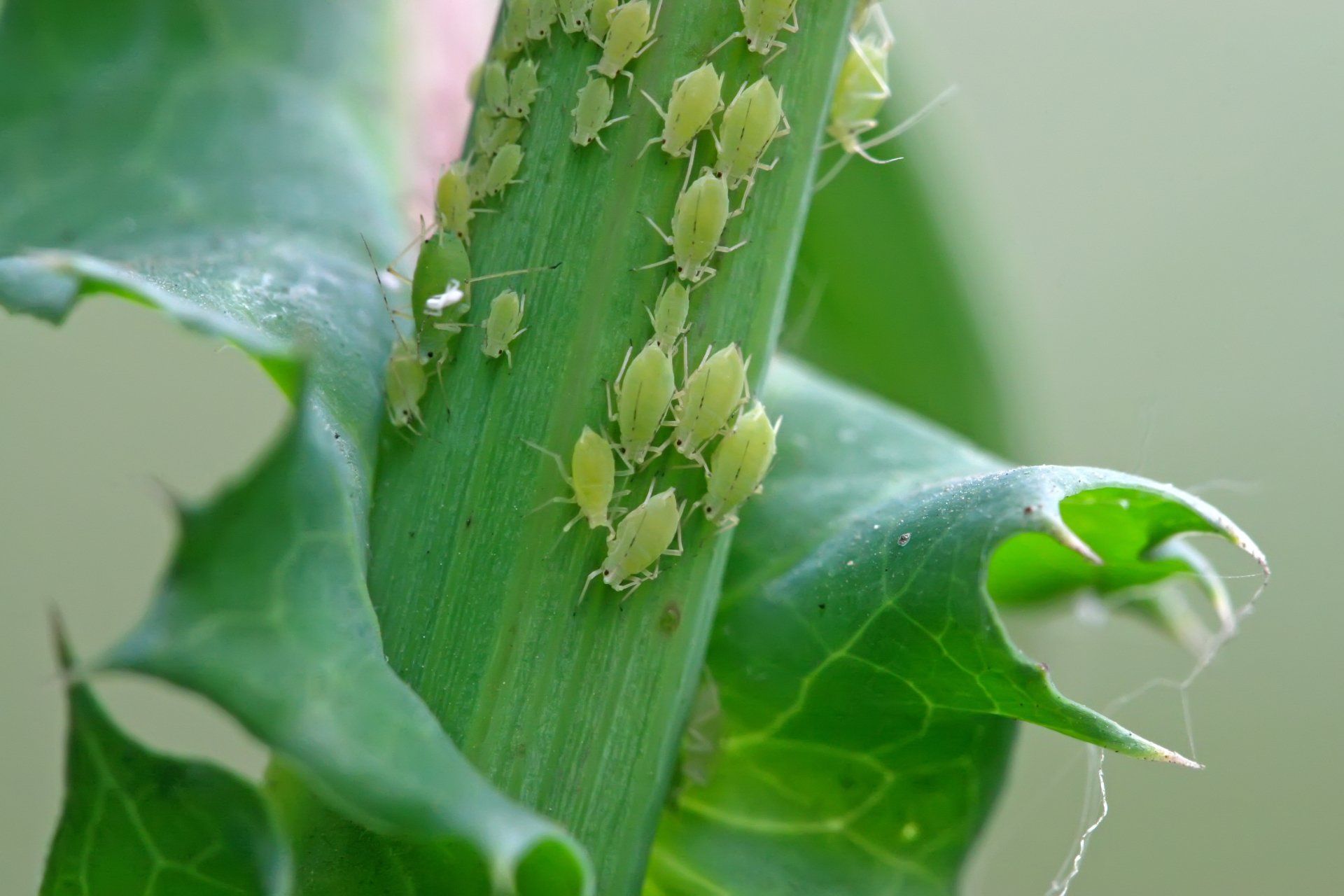All About Aphids: A Tiny Outdoor Pest
They may not bite humans or pass diseases on to your pets, but when aphids appear on your plants, they can be a major annoyance. Keeping these tiny insects away can feel like an ongoing battle, but power comes from knowledge. Here are the basic facts about aphids that will help you better defend your plants against them.
How Can You Identify Aphids?
Over 4,000 species of aphids exist, with quite a lot of variety between species. However, most species share a few identifying characteristics:
- Pear-shaped bodies
- Long legs
- Long antennae
- Wingless adult anatomy
Aphids tend to gather in large numbers on the leaves of plants. If you're not sure whether or not a group of insects on a plant are aphids, see what happens when you disturb them. Aphids don't usually scatter when you disturb them, while other insects do.
What Plants Do Aphids Bother?
Most types of plants have at least one species of aphids that bother them. You may find aphids on squash, pumpkins, potatoes, lettuce, and other garden plants. They also like to attack fruit trees and palm trees. A couple of particularly damaging types of aphids include the following.
Palm Aphids
If you have a palm tree in your yard, especially a majesty palm, watch its leaves for clusters of aphids. Although the aphids themselves do not cause substantial damage to the palm trees, they do encourage a sooty black mold to grow. This mold will make the undersides of your palm fronds look furry and unattractive.
Gall Aphids
Some varieties of aphids, known as gall aphids, cause various trees to form galls, which are swollen segments on their leaves. This problem is most common on cottonwood and poplar trees. Galls caused by aphids won't kill the tree, but they will ruin its appearance.
Lettuce Head Aphids
If you grow lettuce on your patio or in your backyard, then you need to watch out for lettuce head aphids. They feed on young lettuce plants, causing the plants to go limp and fail to form a solid head. Lettuce plants may collapse and die suddenly due to an aphid infestation.
How Can You Get Rid of Aphids
If you notice aphids on your garden plants or trees, the easiest way to get rid of them is to spray the affected plants with cold water. The water will knock aphids off the plant, and they won't usually find their way back onto the plant. Dusting plants with flour can also help, as can spraying plants with soapy water.
If these DIY methods do not work, have a pest control company come spray the affected plants.
How Can You Keep Aphids Away?
As with most insects, keeping aphids away is easier than getting rid of them. If you have fruit trees, be sure to spray them over the winter to kill aphid eggs before they hatch. You can also try planting certain plants that repel aphids near your vegetables, palm trees, and other aphid-prone plants. Catnip, chives, and broccoli all help repel aphids.
Look your plants over for aphids twice per week, especially during the spring when the warm temperatures are optimal for aphid reproduction. If you notice any bugs, take action immediately. A female aphid can lay many eggs per day, so populations from grow quickly.
Unlike mosquitoes, cockroaches, and rodents, aphids do not pose any serious threat to human health - but they can be a threat to your plants. Implement aphid management practices this spring, and if you are struggling with a large aphid population, contact
Area Wide Exterminators. Our knowledgeable exterminators will administer treatments specifically suited for the Central Valley's environment.






